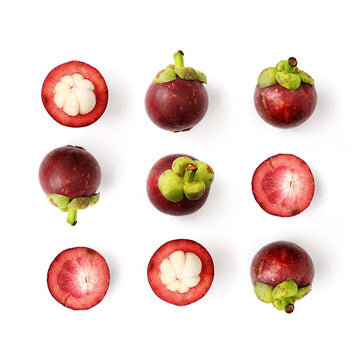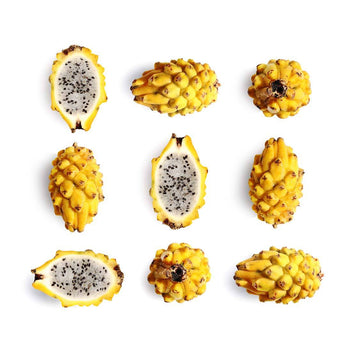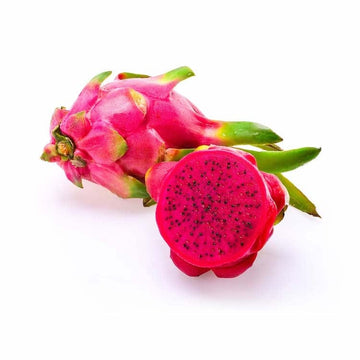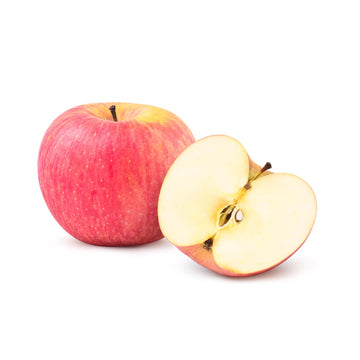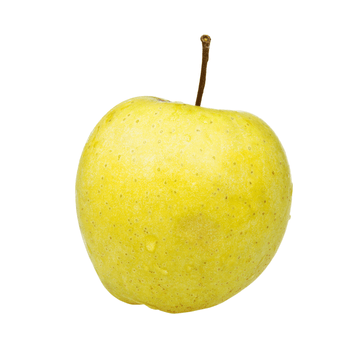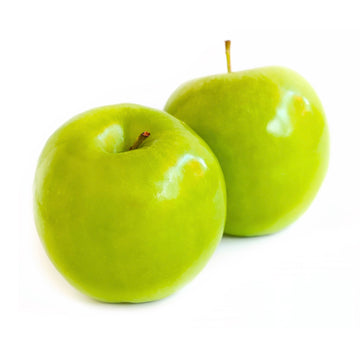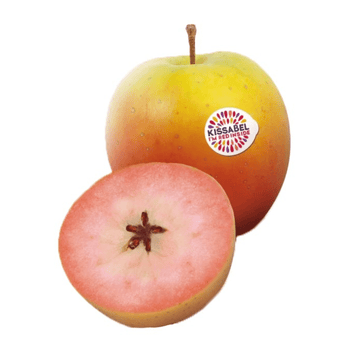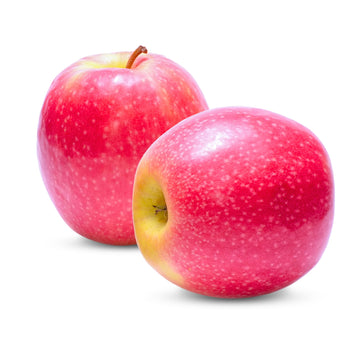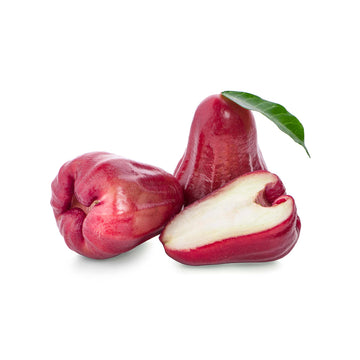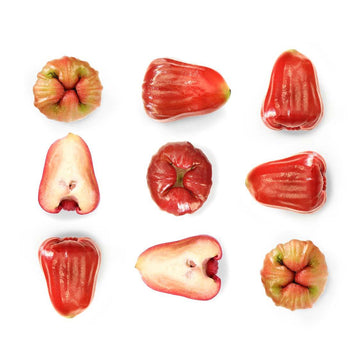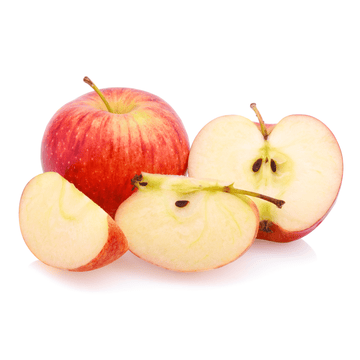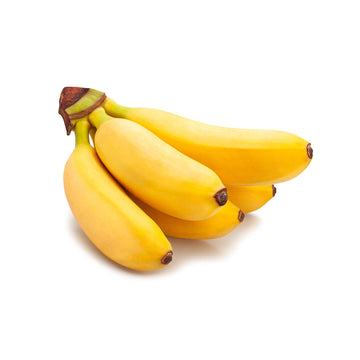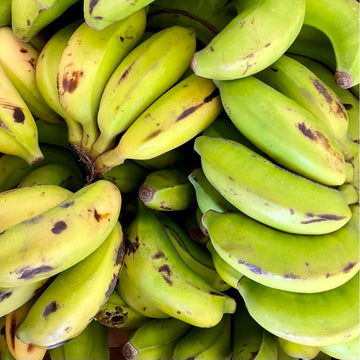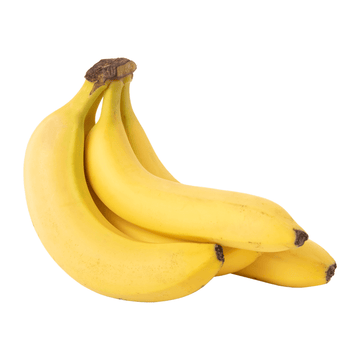A Deep Dive into Low Glycemic Index Exotic Fruits
The world of nutrition is a labyrinth of choices, and for those managing blood sugar levels, the glycemic index (GI) is a critical tool. Fruits are often celebrated for their vibrant flavours and health benefits, but not all fruits are equal when it comes to their impact on blood glucose.
This blog post explores the glycemic index, its importance, and spotlights ten exotic fruits with low GI values, delving into their origins, flavours, textures, and how they stack up against other foods.
Whether you’re managing diabetes, aiming for weight loss, or simply seeking healthier dietary choices, these fruits offer a delicious way to keep blood sugar in check.
Understanding the Glycemic Index (GI)
The glycemic index is a numerical scale from 0 to 100 that measures how quickly a carbohydrate-containing food raises blood glucose levels compared to pure glucose, which has a GI of 100.
Foods are categorised as low (GI ≤ 55), medium (GI 56–69), or high (GI ≥ 70).
Low GI foods cause a slower, steadier rise in blood sugar, while high GI foods trigger rapid spikes.
Glycemic Load (GL)
Glycemic load (GL) complements GI by factoring in both the GI value and the amount of carbohydrates in a serving, providing a more practical measure of a food’s impact on blood sugar. For example, a food with a high GI but low carbohydrate content, like watermelon, may have a low GL.
Ripeness and Preparation Affects GI and GL
The GI of a fruit can vary based on factors like ripeness, preparation, and processing. For instance, an unripe banana has a lower GI (around 30) than a ripe one (around 51). Pairing fruits with protein, fat, or fibre—such as eating an apple with peanut butter—can further reduce their glycemic impact by slowing digestion.
Who Needs to Limit High GI Foods and Why?
Low GI foods are particularly beneficial for specific groups:
-
People with Diabetes: For those with type 1 or type 2 diabetes, low GI foods help manage blood glucose levels, reducing the risk of spikes that can strain insulin regulation. Studies show that low GI diets can lower HbA1c levels, a marker of long-term blood sugar control, by up to 0.5% in type 2 diabetes patients.
-
Individuals with Insulin Resistance or Prediabetes: These conditions involve impaired glucose metabolism, and low GI foods can prevent further progression to diabetes by minimising insulin demand.
-
Those Seeking Weight Management: Low GI foods promote satiety by releasing glucose gradually, reducing hunger spikes and overeating. They also help regulate fat storage by stabilising insulin levels.
-
Athletes or Active Individuals: While high GI foods are useful for quick energy recovery post-exercise, low GI foods provide sustained energy for endurance activities.
Beyond these groups, anyone aiming for stable energy levels and reduced risk of chronic diseases like cardiovascular disease or metabolic syndrome can benefit from prioritising low GI foods. However, GI shouldn’t be the sole dietary focus—nutrient density, portion size, and overall balance are equally crucial.
Why Choose Exotic Fruits?
Exotic fruits, often hailing from tropical or subtropical regions, bring unique flavours and textures to the table. Many have low GI values, making them ideal for blood sugar management while adding variety to diets. These fruits are packed with vitamins, antioxidants, and fibre, enhancing their health benefits.
Below, we explore ten exotic fruits with low GI values, their origins, sensory profiles, GI ratings, and comparisons to other foods.
1. Cherimoya
-
Origin: Native to the Andes in South America, cherimoya thrives in subtropical climates like Peru and Ecuador.
-
Flavour/Texture: Known as the “custard apple,” cherimoya has a creamy, custard-like flesh with a sweet, tropical flavour blending pineapple, banana, and vanilla. Its texture is soft and scoopable, with large black seeds.
-
GI Rating: Approximately 32. Its GL is around 6 for a 100g serving.
-
Other Factors: Its fibre content slows glucose absorption, making it a diabetic-friendly choice. Cherimoya is rich in vitamin C and potassium.
-
Interesting Points: It’s best eaten chilled, with the flesh scooped out or blended into smoothies. Avoid the seeds, as they are toxic if crushed.
2. Dragon Fruit (Pitahaya)
-
Origin: Native to Central and South America, now widely cultivated in Southeast Asia and Australia.
-
Flavour/Texture: Dragon fruit has a mild, subtly sweet flavour reminiscent of kiwi and pear, with a juicy, soft texture studded with tiny edible seeds. Its vibrant pink or yellow skin encases white or red flesh.
-
GI Rating: Around 48. Its GL is about 7 for a 100g serving.
-
Other Factors: Its high water content contributes to a low GL. Dragon fruit is packed with antioxidants like betalains to support immune health.
-
Interesting Points: It’s often eaten fresh, in salads, or as a smoothie base. The yellow variety is typically sweeter.
3. Guava
-
Origin: Native to Central and South America, guava is now grown in tropical regions like India and Thailand.
-
Flavour/Texture: Guava offers a sweet-tart flavour with floral notes, similar to a mix of pear and strawberry. Its flesh ranges from white to pink, with a grainy texture due to edible seeds.
-
GI Rating: Approximately 31, lower than most fruits. Its GL is around 4 for a 100g serving.
-
Other Factors: Guava’s GI is lower than most fruits. Guava is a vitamin A and C powerhouse, with more vitamin C than an orange.
-
Interesting Points: Its seeds are edible but can be crunchy, so blending is an option for smoothies.
4. Starfruit (Carambola)
-
Origin: Native to Southeast Asia, particularly Malaysia and Indonesia, now grown in tropical regions worldwide.
-
Flavour/Texture: Starfruit has a crisp, juicy texture with a tart-sweet flavour, like a blend of apple and citrus. When sliced, its star-shaped cross-sections add visual appeal.
-
GI Rating: Around 45. Its GL is about 6 for a 100g serving.
-
Other Factors: Starfruit’s fibre content aids slow digestion. It’s rich in antioxidants and vitamin C.
-
Interesting Points: Starfruit is best eaten fresh or as a garnish. Those with kidney issues should avoid it due to its oxalic acid content.
5. Rambutan
-
Origin: Native to Southeast Asia, particularly Malaysia and Indonesia, now cultivated in tropical climates.
-
Flavour/Texture: Rambutan’s juicy, translucent flesh is sweet with a slight tartness, similar to lychee. Its texture is soft and succulent, encased in a spiky, red-green rind.
-
GI Rating: Estimated at 40. Its GL is around 5 for a 100g serving.
-
Other Factors: Rambutan’s high-fibre helps moderate glucose release. Rambutan is rich in vitamin C and iron.
-
Interesting Points: Peel the rind to reveal the fruit, which is perfect for snacking or adding to fruit salads.
Practical Tips for Incorporating Low GI Fruits
-
Portion Control: Even low GI fruits contribute carbohydrates, so stick to recommended serving sizes (e.g., one cup of berries or half a cup of other fruits).
-
Pairing: Combine fruits with protein or fat, like guava with yogurt or starfruit with nuts, to further lower their glycemic impact.
-
Preparation: Eat fruits whole rather than juiced to retain fibre, which slows glucose absorption. Avoid canned fruits with added sugars.
-
Timing: Consume fruits as part of a balanced meal to minimise blood sugar spikes, especially for those with diabetes.
Limitations of the Glycemic Index
While GI is a valuable tool, it has limitations. It doesn’t account for individual metabolic differences, nutrient content, or how foods are combined in meals. For example, eating a high GI fruit like mango with protein can mitigate its blood sugar impact. Glycemic load provides a more nuanced perspective, but both metrics should be used alongside a holistic dietary approach.
Conclusion
Low glycemic index exotic fruits offer a delicious and nutritious way to enjoy nature’s sweetness without compromising blood sugar control. From the creamy cherimoya to the pungent durian, these fruits bring diverse flavours, textures, and health benefits to the table. Their low GI values—ranging from 30 to 49—make them comparable to staples like lentils and non-starchy vegetables, far outperforming high GI culprits like white bread or sugary snacks.
For people with diabetes, those seeking weight management, or anyone prioritising stable energy, these fruits are a smart choice. By incorporating them thoughtfully into a balanced diet, you can savour their exotic allure while supporting long-term health. So, explore these tropical treasures, experiment with pairings, and let your taste buds travel the world—one low GI bite at a time.


